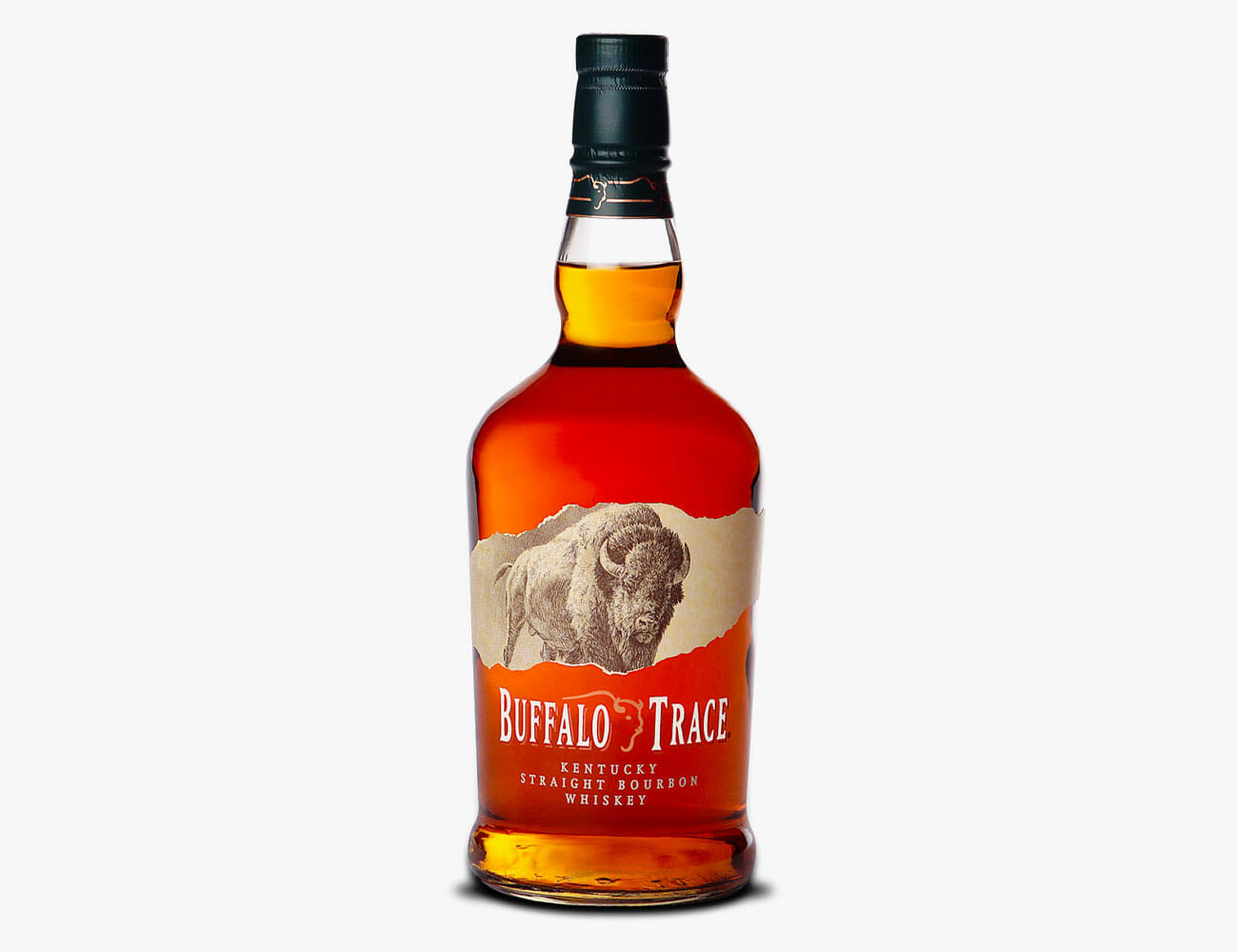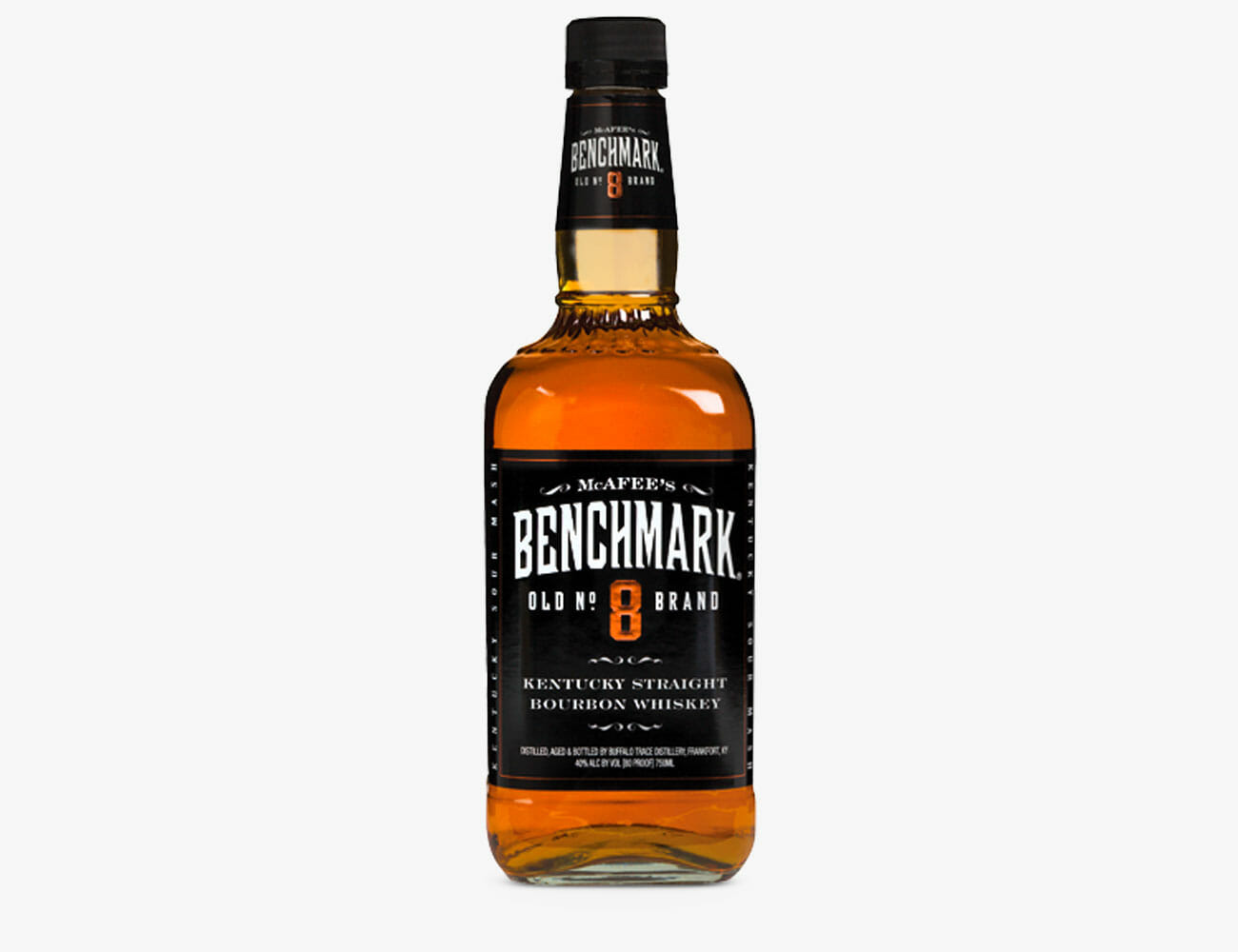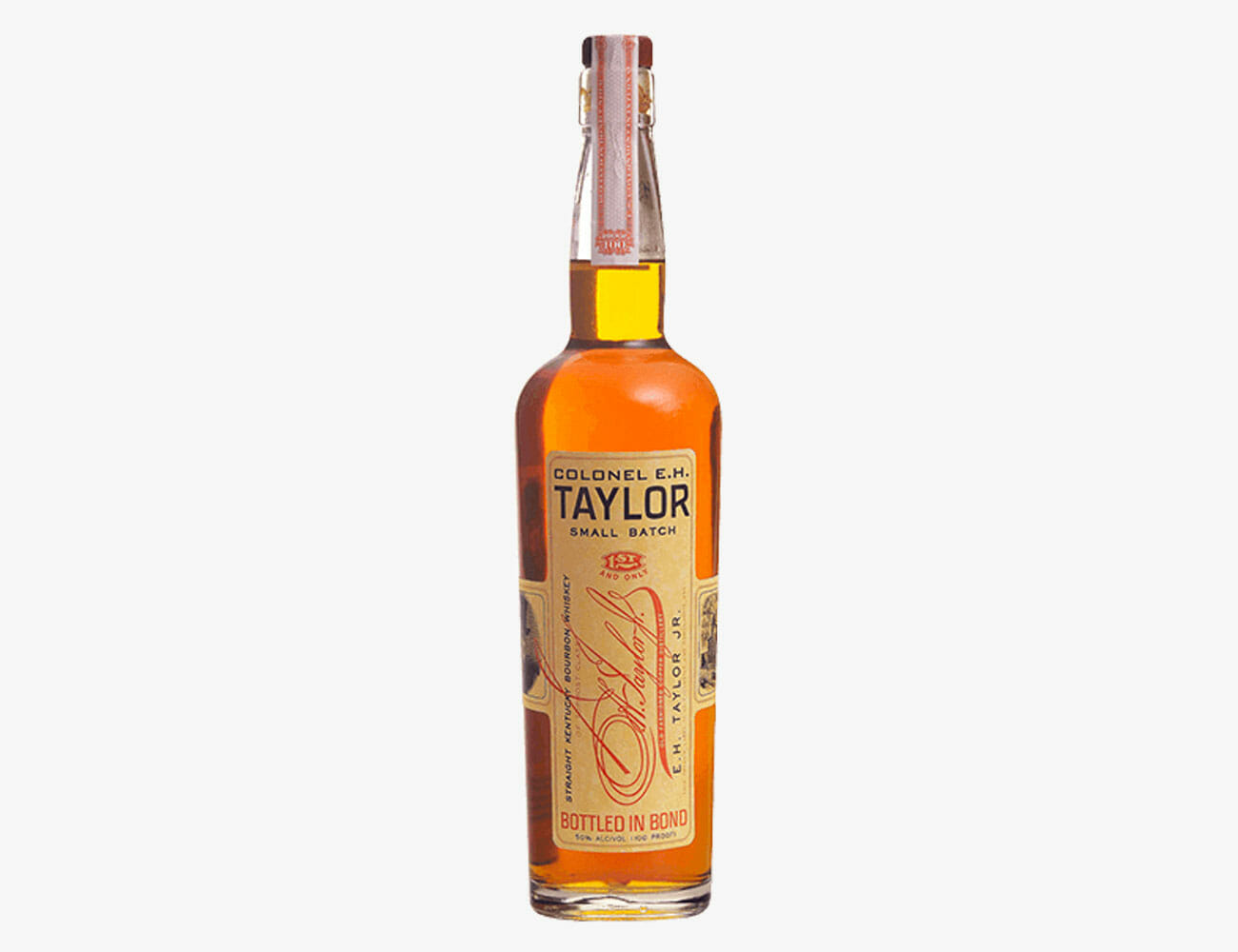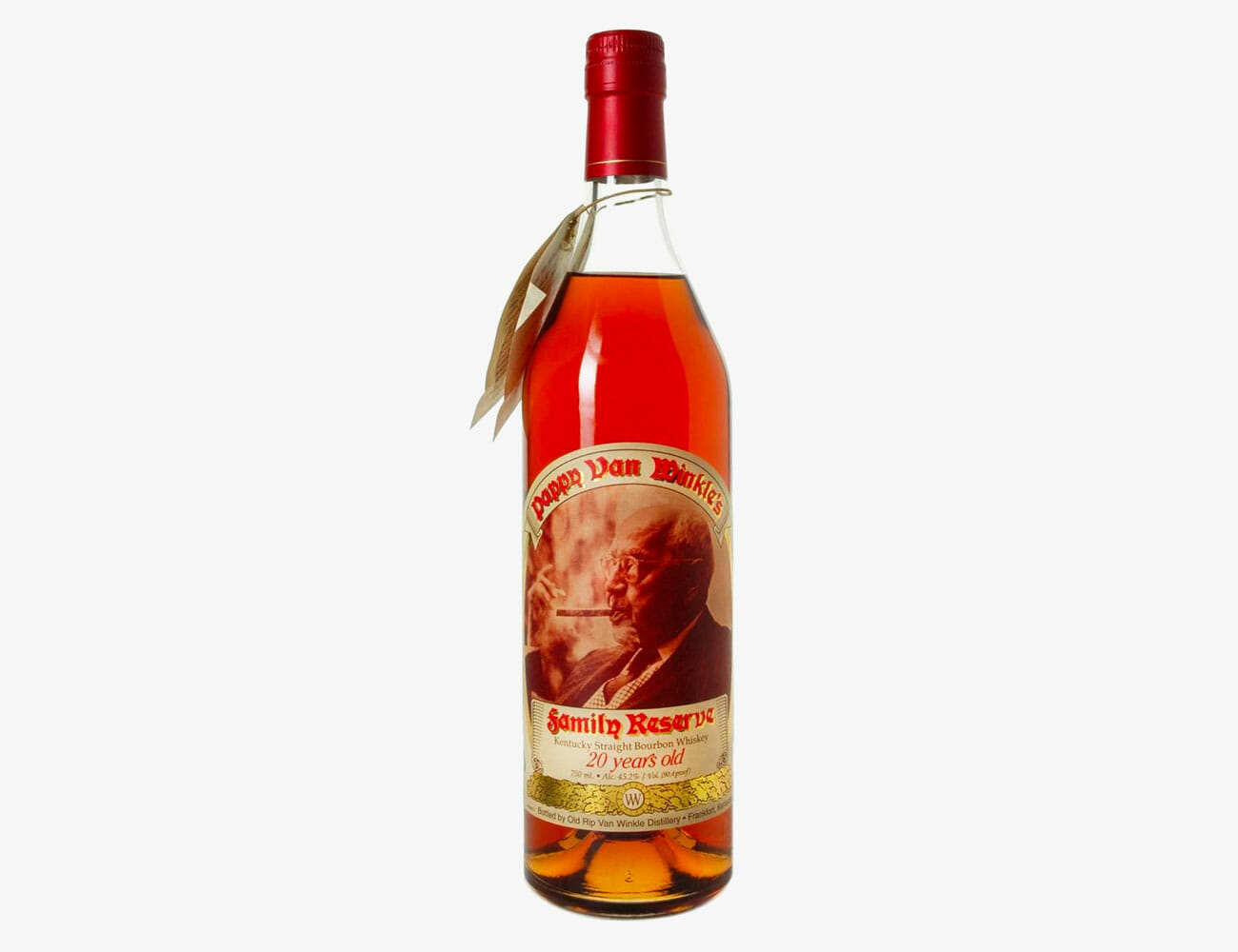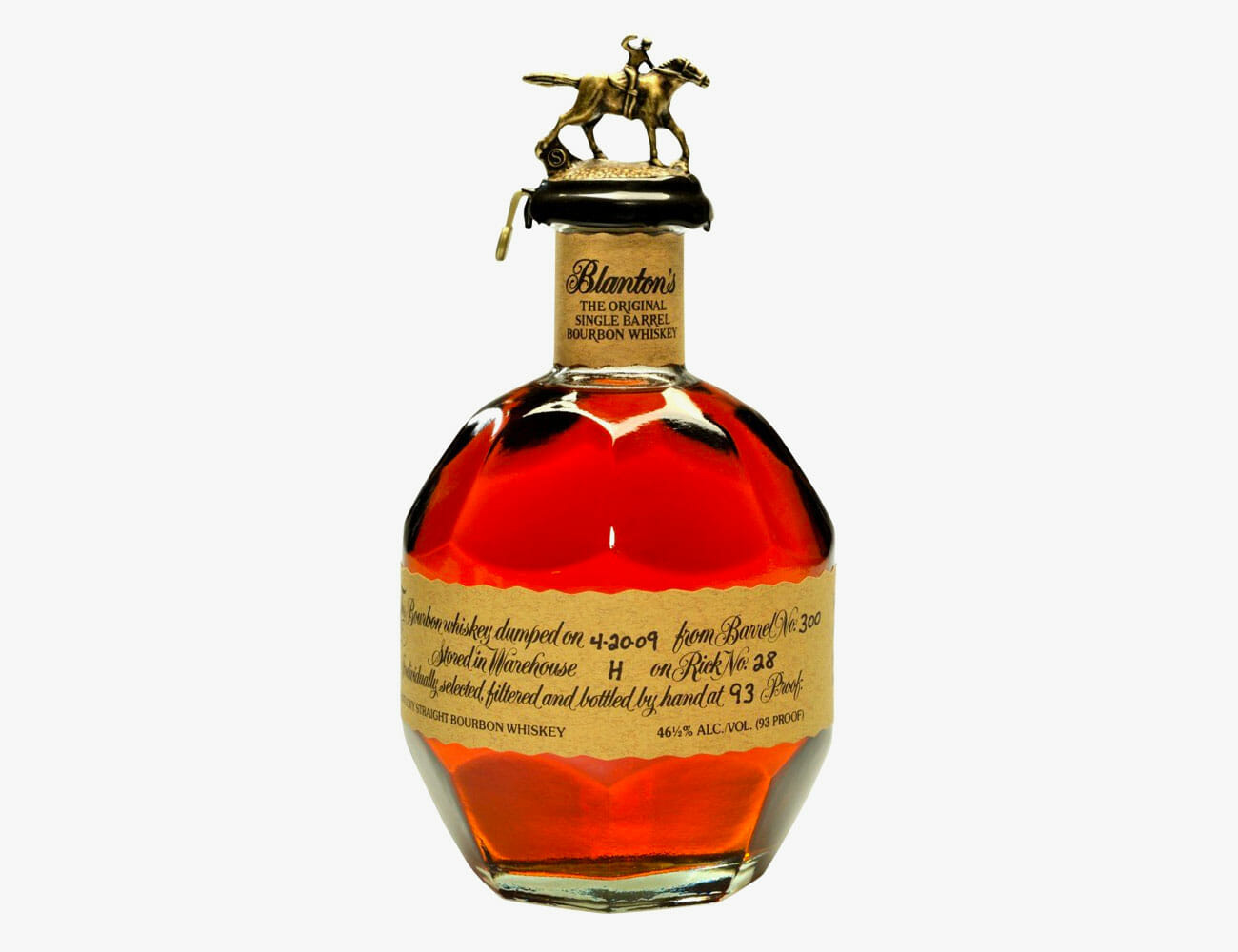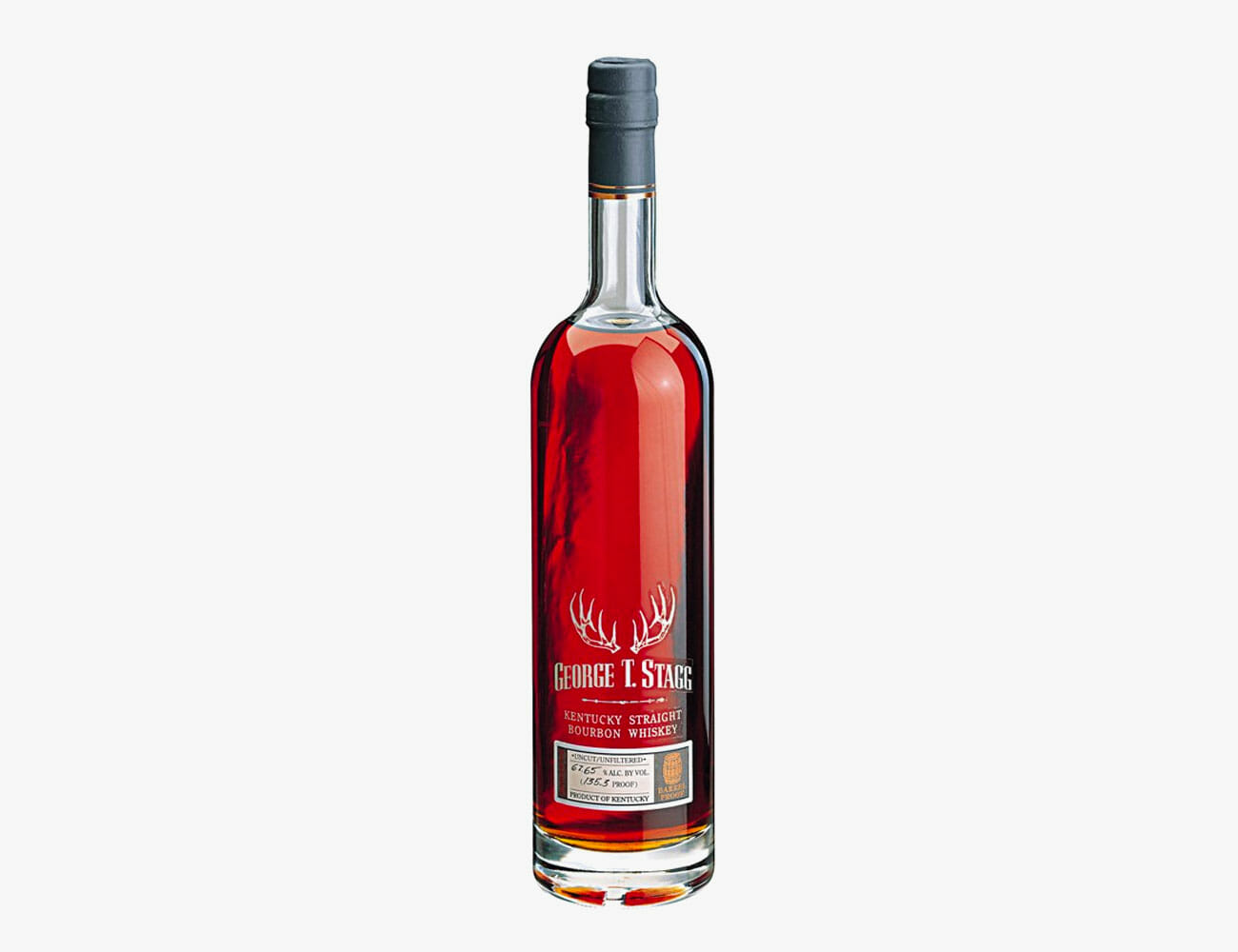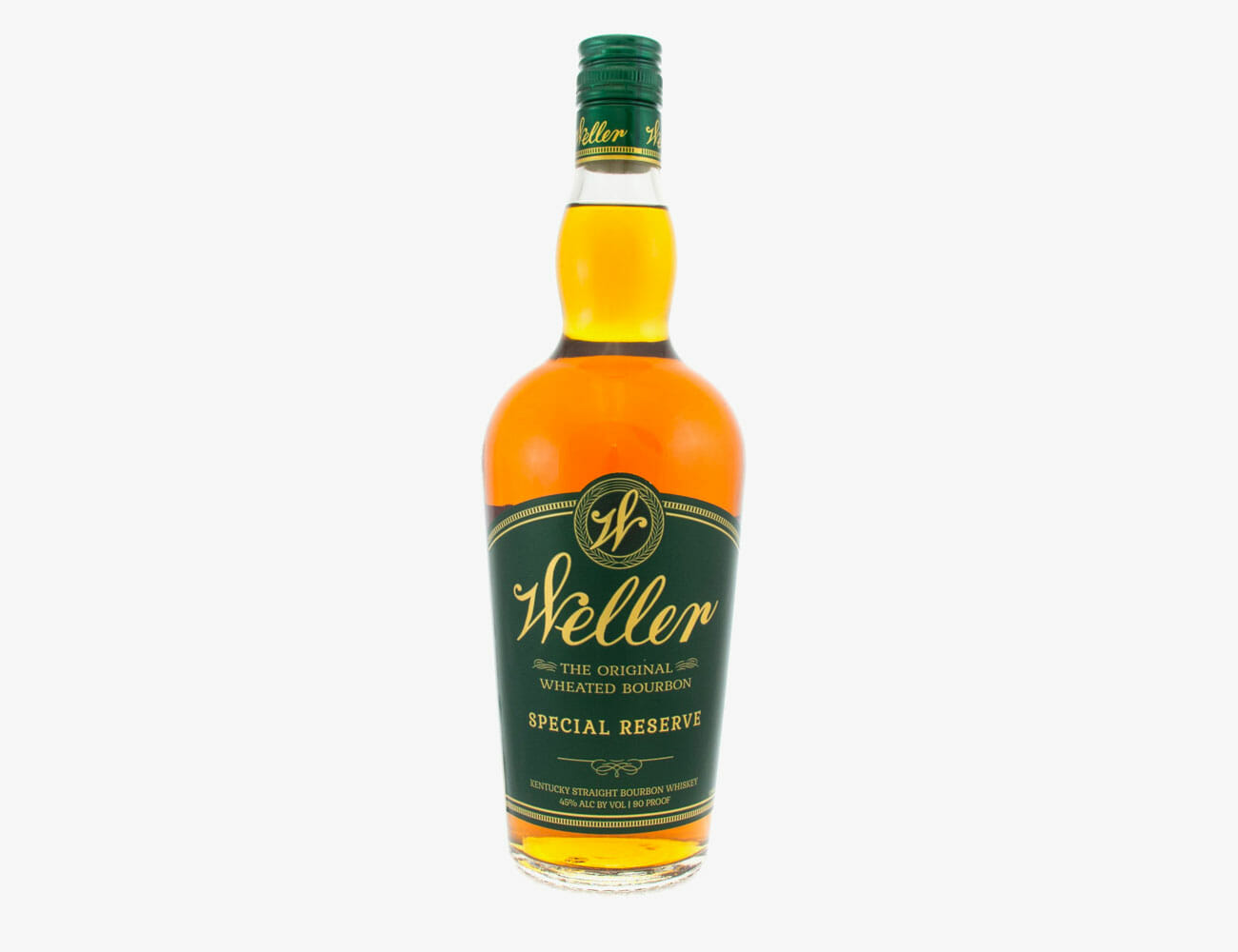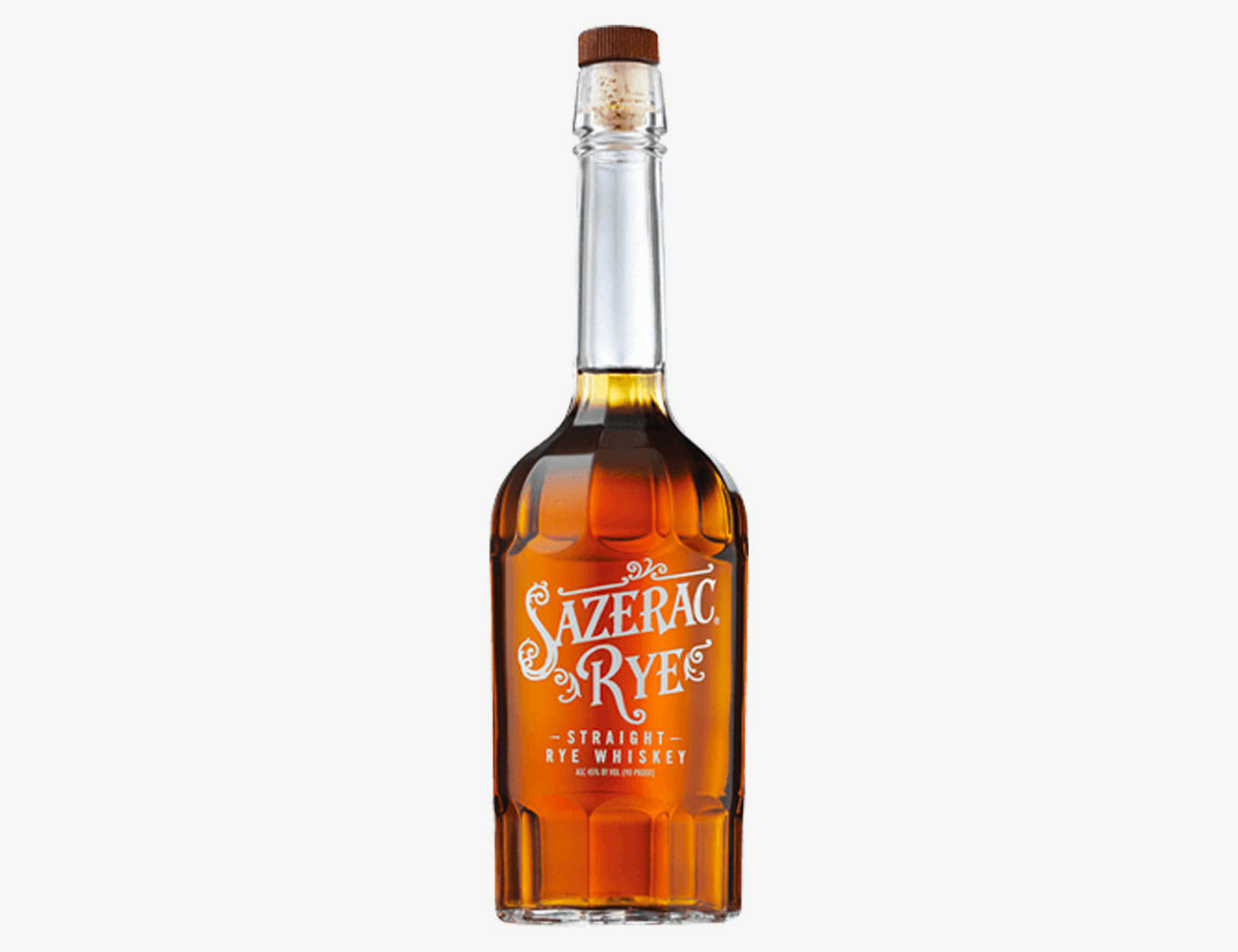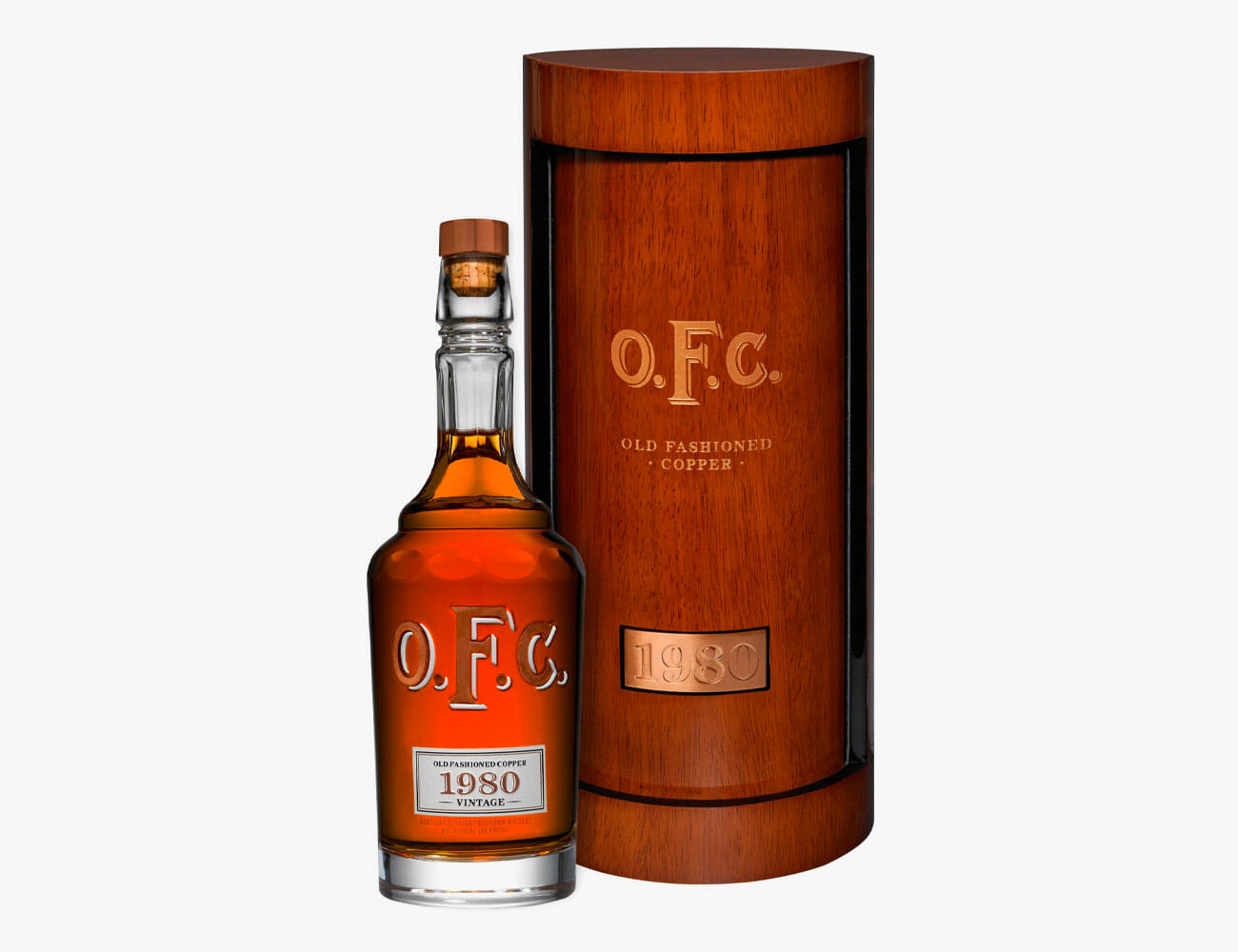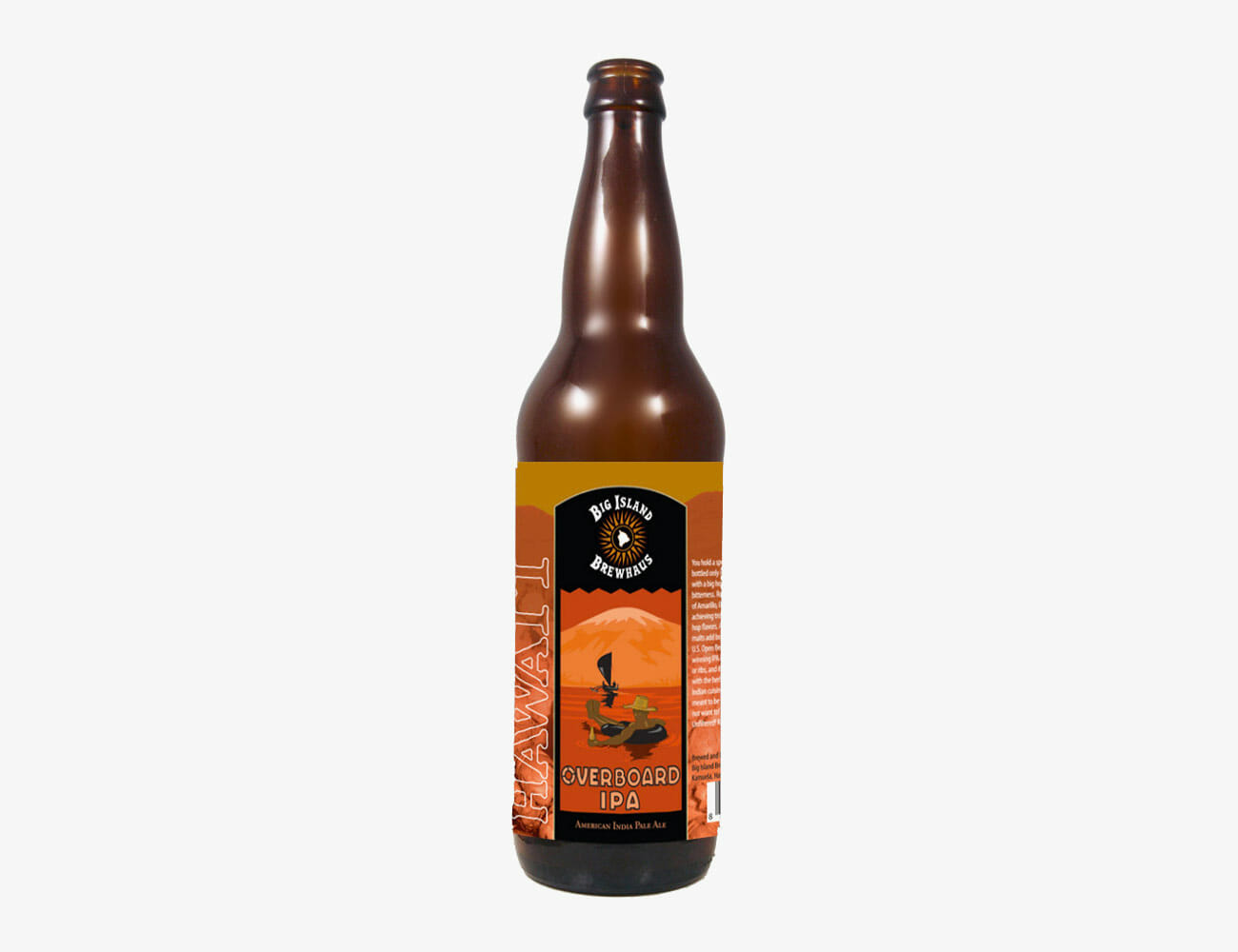There is perhaps no American whiskey maker more respected or awarded as Buffalo Trace Distillery. The flags flying under its umbrella are some of the biggest names in whiskey — Pappy Van Winkle, E.H. Taylor, Weller and so on. But the shuffling and mass coalescing of major whiskey brands can make it strenuous to know your Pappys from your Wellers, and harder still to recall the $1,000 difference between Antique Weller 107 and the Antique Collection’s William Larue Weller. That’s why we’re here. From impossible-to-find grails to $10 mixers, Buffalo Trace offers it all. Here’s your cheat sheet.
Mashbills
All Buffalo Trace whiskey comes from one of four recipes. In whiskey-making patois, recipe means mashbill, or the specific levels of corn, malt, rye and barley combined to distill the beginnings of every bottle.
The catch? The distillery has marked the exact balance of barley, corn, wheat and rye as proprietary (though many try to crack the code). So we know which bottles start as which mashbills, but we don’t know specific percentages of each ingredient. Some one-off expressions — like Van Winkle’s Family Reserve Rye — are exceptions to the rule.
Mash #1: a low-rye bourbon mash (Buffalo Trace, Eagle Rare, E.H. Taylor, George T. Stagg, Benchmark)
Mash #2: a higher-rye bourbon mash (Blanton’s)
Wheated Mashbill: replaces rye content with wheat (Pappy Van Winkle, Weller)
Rye Mashbill: mash made with a little more than 50 percent rye (Sazerac)
Pricing
Bottles from brands Pappy Van Winkle and W.L. Weller can cost hundreds of dollars, if you can even find them, but Buffalo Trace isn’t the one to blame. The distillery distributes all of its whiskey with longstanding suggested retail prices (SRP). Take Pappy, a brand with bottle prices that climb well into the four-digit realm. In an honest world, you’d be able to find one for as low as $60.
Prestige
The whiskey landscape is run almost entirely by a handful of conglomerates and mega-corporations, and Buffalo Trace Distillery stands out. Names like Van Winkle, Weller, E.H. Taylor and Blanton’s are some of the most sought-after bottles of brown on the planet, and that’s before mentioning the coveted Antique Collection and O.F.C. Vintage releases.
While all those names carry weight with collectors and award show judges, its humbler mainline bottles are no less noble. Dating back to 2000, Buffalo Trace and Eagle Rare — the brand’s two most available brands — have earned more awards than are worth counting.
How to Score Bottles
All Buffalo Trace Distillery whiskeys are distributed “on allocation.” This means there’s a specific number of bottles allocated to each state throughout the year across its whole catalog. This is done to ensure retailers, restaurants and consumers in every state get a shot at some.
Your best shot at nabbing prized bottles comes down to being a good customer, which starts with communication. Frequent the shops in your area and talk to the person behind the counter. Ask when they usually get the bottle you’re hunting for and reward information with your patronage. Remember that if you’re looking for something (especially a Buffalo Trace Distillery whiskey), others are too — they don’t have to give you information, but they may be more inclined to do so if you’re a regular.
Beyond that, know your release periods. Bottles of Pappy are allocated October 1 and typically hit shelves mid-October to early December. The Antique Collection is also distributed in the fall. Most other regularly distributed bottled arrive on shelves in the first week of the month.
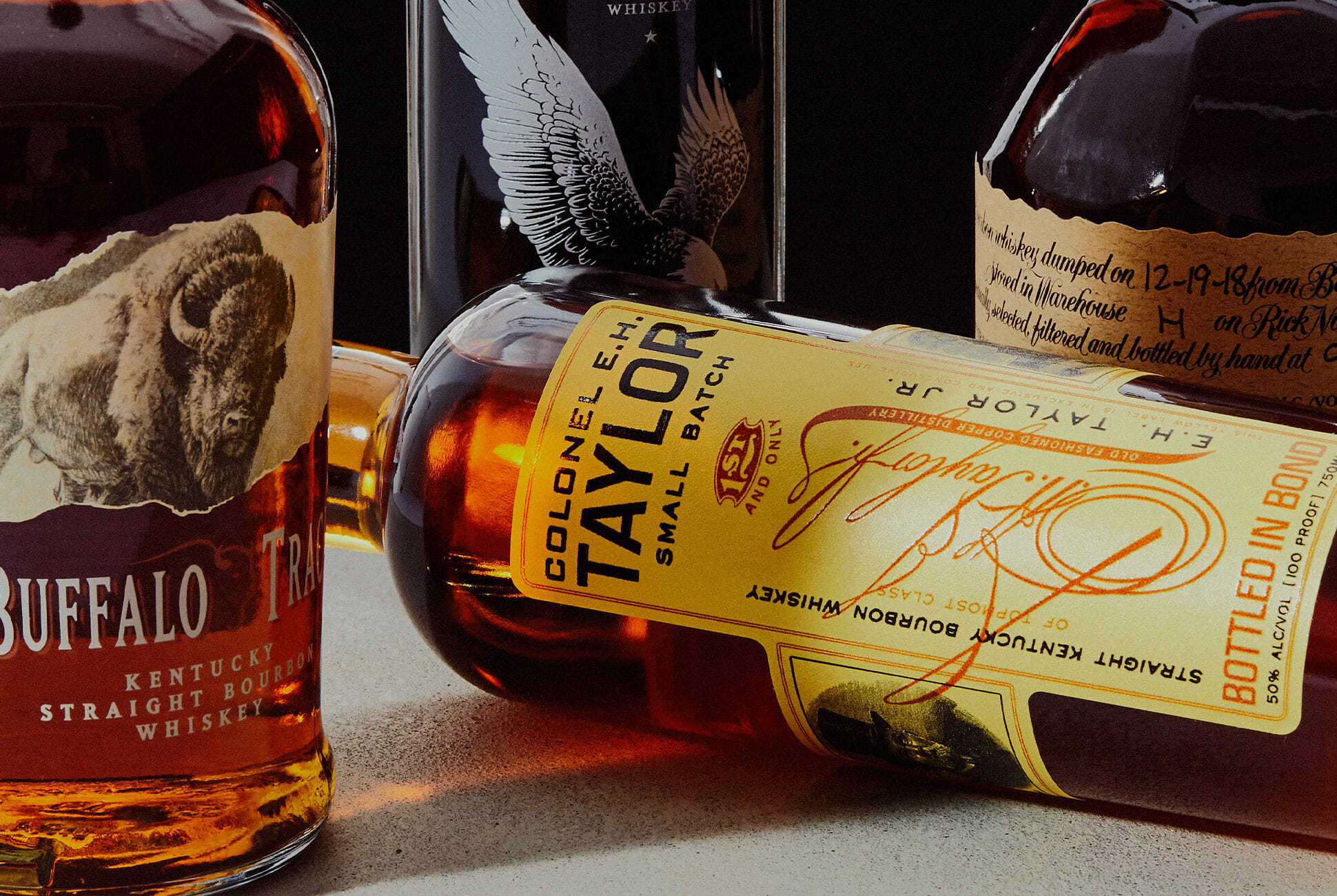
Notable People
None of the names you see gracing bottles in the Buffalo Trace catalog were made up. They refer to real people from the distillery’s past. Here’s the short list:
William Larue Weller: The inventor of wheated bourbon whiskey. Much of Weller’s work — whiskey education, distilling and tinkering — was done in the early to mid-1800s. Bottles of Weller became so popular he’d dip his thumb in green ink and print it on each bottle to ensure authenticity.
E.H. Taylor, Jr.: Colonel Edmund Haynes Taylor was a mid-19th-century banker turned bourbon hero. Taylor laid funding down for a number of distillers and later opened the O.F.C. Distillery. He was also instrumental in the legitimizing of the bourbon industry, playing a key role in getting the Bottled-in-Bond of 1897 through Congress.
George T. Stagg: Stagg worked hand-in-hand with Taylor in the creation of O.F.C. and later bought it off him. He re-named the distillery after himself and it remained the way for almost 100 years before being renamed again. This time the newly minted distillery was called “Buffalo Trace.” Now Stagg’s name appears on just one bottle in the Antique Collection that’s one of the most collectible whiskeys in the world.
Albert B. Blanton: Blanton took over George T. Stagg’s distillery in 1921 and steered it through both the Great Depression and Prohibition (he convinced the government to let them continue making “medicinal whiskey”). He’s perhaps most famous for his stature as the founding father of the single barrel bourbon.
Julian Sr. “Pappy” Van Winkle: The cigar-toting man plastered on every bottle of Pappy is Pappy himself. Co-founder of the forward-thinking Stitzel-Weller Distillery, Pappy, along with the Wellers, showed the world the power of old, wheated bourbon.
Elmer T. Lee: Blanton’s protégé. Lee joined the distillery in 1949 and became its first Master Distiller. He’s credited as one of the people responsible for bourbon’s return to form in the ’70s and ’80s, along with other bourbon legends Booker Noe, Jimmy Russell and Parker Beam.
Harlen Wheatley: A four-time James Beard award nominee, Buffalo Trace’s Master Distiller since 2005 probably wouldn’t include himself in this list, but everyone else would. Since his ascension, Wheatley has led the distillery to unprecedented consistency in competition results year after year. He’s also spearheaded Buffalo Trace’s innovative initiatives like the new Old Charter Oak and Warehouse X.
Buffalo Trace Distillery Whiskey Brands
Buffalo Trace
SRP: $25
Recipe: Mashbill #1
Age: Aged at least 8 years
Notable: Named Gear Patrol’s Best All-Around Bourbon
Buffalo Trace’s namesake whiskey is the distillery’s second most-affordable bottle, behind Benchmark, which makes the value all the more remarkable. The bottle is cut to an easy-drinking 90 proof and, because its made alongside your Staggs, Wellers and Van Winkles, every bottle is a lottery ticket. You could wind up with a normal bottle of Trace or something a little more special. Caramel and vanilla do the heavy lifting on the palate while an oaky brown sugar finish rolls in nice and slow. It’s a rare affordable bourbon that checks boxes for ability to drink neat or in cocktails.
McAffee’s Benchmark Old No. 8 Brand
SRP: $12 SRP (Most affordable Buffalo Trace Distillery whiskey)
Recipe: Mashbill #1
Age: Aged at least 36 months
Notable: 2018 Gold Medal Winner at Los Angeles and New York Spirit Competitions
Just call it Benchmark. With a suggested retail price of $12, Buffalo Trace Distillery’s cheapest juice has earned a place in the hearts of whiskey writers, cash-strapped bourbon drinkers and anyone trying to avoid party guests drinking the good stuff. Its ultra-low price makes it a strong choice for a punch mixer, and the slightly watery 80 proof mean neat drinking is relatively easy (don’t bother watering it down further). Served straight, it hits you with honey and a bit of orange peel on the nose and a medium-strength slow burn on the tongue. Expect a lightly oaky, fairly cherry-forward follow through.
Eagle Rare
SRP: $30
Recipe: Mashbill #1
Age: Aged at least 10 years
Notable: Jim Murray’s 2019 Best Bourbon, Under 10 Years
Amid a shrinking market of well-aged, realistically priced bourbons, Eagle Rare keeps its feathers above water. The 90-proof bottle separates itself by retaining its exceptionally rare 10-year age statement and a retail price below $50. On top of its small mountain of awards, it was named the best bourbon whiskey (up to 10 years) you can buy by whiskey’s single most important reviewer, Jim Murray. In a whiskey world where transparency is disappearing and exclusivity is burgeoning, Eagle Rare is positioned as a affordable luxury for the everyman.
Eagle Rare bourbon can generally be described as a richer, deeper, better Benchmark. Made from the same mashbill, it follows much of the same beat – a honey-orange peel nose and manageable burn, especially. Once its coated the palate, things change: expect less fruit, more wood, undercurrents of toffee and a bit of spice.
E.H. Taylor
SRP: $40 to $70 (varies with individual expressions)
Recipe: Mashbill #1
Age: Aged at least 4 years (Bottled-in-Bond requirement)
Notable: All bottles (except Barrel Proof) are Bottled-in-Bond
Carrying the name of one Edmund Haynes Taylor, Jr., Buffalo Trace Distillery’s E.H. Taylor collection has a bottle for every whiskey drinker. By virtue of hosting such a wide range of expressions — small batch, single barrel, barrel proof, straight rye and a host of valuable one-offs — the brand rides the line between everyday drinkers and bottles worth getting into a fistfight over. Generally speaking, the order of value for regularly allocated E.H. Taylor goes like this: Small Batch, Straight Rye, Single Barrel and Barrel Proof.
Head and shoulders among the group of one-offs is a legendary bottle known as Warehouse C Tornado Surviving bourbon. With “1st and Only” scrawled under the masthead, this bottle is the product of a warehouse ripped apart by a tornado, the barrels inside open to the elements of a sticky Kentucky spring. The result is a bottle rife with weirdness and nearly impossible to find — that is, unless you’re willing to drop close to $3,000 for it.
It’s difficult to nail down tasting notes for E.H. Taylor because it comes in such variety, but there are some throughlines: unless it’s rye, it carries a corn-driven sweetness, vanilla notes throughout and a buttery mouthfeel and finish.
Pappy Van Winkle
SRP: $60 to $270 (varies with individual expressions)
Recipe: Wheated mashbill
Age: Aged 10 to 23 years
Notable: A bottle of 23-Year-Old Pappy Family Reserve was gifted to the Pope by a Kentuckky priest
The flagbearer for those that roll their eyes at those willing to spend a months (or multiple months) rent on a little bottle of alcohol. Other than its stuffed trophy cabinet and sickening price tags, it’s known for its use of wheat — the famed wheat mashbill that all its whiskeys (except the rye, obviously) start as — and very high age statements. Though the Pappy Van Winkle Family Reserve line is the most coveted (and the only one with “Pappy” included in the name), you’ll be hard-pressed to find a bottle for less than $1,000.
But how does it taste? Though ages differ rather dramatically from bottle to bottle, Van Winkle bourbon’s defining trait is its wheated mashbill, which makes for a soft sipping, low burn, enormously rich glass. There is citrus, sherry, wood, leather, pepper and cherries, too. That blend of impossible smoothness and mind-bending depth are what Pappy is known for.
Blanton’s Single Barrel
SRP: $60
Recipe: Mashbill #2
Age: Aged between 6 and 8 years
Notable: Claims to be the first single barrel bourbon ever
Blanton’s was founded in 1984 by bourbon legend Elmer T. Lee. Two rules define its character and charm: it’s single barrel, which means every bottle is filled with whiskey from one barrel, and it’s aged in Warehouse H — one of few rickhouses in the world built entirely out of metal. The metal construction means the rickhouse lacks significant insulation, so all the barrels inside are exposed to far more aggressive temperature and humidity shifts than traditional wood or brick rickhouses. The result of this practice is a citrusy nose, vanilla driven palate and dry, mellowing, slightly bitter finish.
Sadly, of the four expressions — Original, Gold, Straight from the Barrel and Special Reserve –only the Original is available in the US, while other bottles are sold in select international markets.
Antique Collection
SRP: $99 (Re-sale prices will be significantly higher)
Recipe: Mashbills vary
Age: Age varies
Notable: the bourbon drinker’s holy grail find — re-sale prices can reach well over $3,000 a bottle
There are many limited runs of good whiskey that gets way too much hype. Buffalo Trace’s Antique Collection is not in this category.
Released every fall, Antique Collection is the release of all releases for bourbon hunters. Made up of five American whiskeys — William Larue Weller, George T. Stagg, Eagle Rare 17-Year, Thomas Handy Sazerac Rye and Sazerac Rye 18-Year — it regularly hauls in loads of the biggest awards in the industry. Jim Murray named the Handy rye the best rye of the year in 2019, while the Weller took home the prize for best whiskey of the year (across all whiskey categories, worldwide). If you find any bottle for its suggested retail price of $99, buy a fistful of lottery tickets. Otherwise, expect to pay two to three times as much.
W.L. Weller
SRP: $25 to $99
Recipe: Wheated Mashbill
Age: Aged 7 to 12 years (depending on expression)
Notable: Claims to be the first wheated bourbon ever
Weller is the less sexy version of Pappy. As such, it’s earned a reputation as the bourbon drinker’s bourbon. It’s nowhere near as difficult to find as Pappy, though it’s becoming more and more difficult to track down itself. In order of rarity, here are four mainline bottles of the stuff: Special Reserve, 12-Year, Antique and William Larue Weller (part of the Antique Collection).
Special Reserve is the original and most accessible — a NAS (no age statement) bottle that serves as the ideal entryway into wheated bourbon (you can find bottles anywhere from $25 to $50, generally). The 12-year and Antique 107 are split by age and proof, with the Antique 107 being the highest proof of the Weller bottles and the 12-year being the second longest-aged. And as is customary, the most coveted of the group comes from the Antique Collection, and the William Larue Weller is routinely the most sought-after bottle in that group, too.
When discussing wheaters, the general assumption is extra-long stints in barrels is a good thing. This runs against how most seasoned drinkers describe rye-based bourbons. The trade-off is the younger bottles are, to many, lesser. The four- to seven-year-old Special Reserve hits you with a lot more ethanol flavor on the nose and palate than the 12-year, for example. With Weller, the higher the age, the more the whiskey blooms into the creamy, nutty, grassy, toasty booze everybody wants.
Old Charter Oak
SRP: $70
Recipe: Mashbill #1
Age: Aged 10 years
Notable: Every new bottle is aged in a different type of oak
Confusingly, Old Charter Oak is both a very old and very new line of bourbon. An older bottle bearing the name has been scantly distributed in a few southeastern markets since the 1930s. The newer line was announced at the end of 2018. Think of it as a science experiment framed around a single chain in the whiskey making process: wood. Every subsequent release will be bourbon aged in barrels made from oaks of different types, ages and regions. The first bottle was aged 10 years in oak from Mongolia and tastes like baking spices, nuts and a lot of wood. Buffalo Trace Distillery says to expect very limited releases four times a year.
Sazerac Rye
SRP: $27 to $99
Recipe: Rye Mashbill
Age: Aged 4 to 6 years
Notable: Made with the lowest possible percentage of rye for rye whiskey designation
Sazerac’s ryes taste a lot closer to bourbon than rye — or at least what we’ve come to expect from rye whiskey. Thanks to a rye industry that erupted alongside bourbon, loads of distillers were quickly bled dry of their rye stocks — MGP, an Indiana-based mass distilling operation, seized the opportunity to sell its rye whiskey to everybody who wanted it. And because their brand of rye is so rye-forward — reportedly 95 percent mashbill is rye — the whiskey drinking public quickly grew accustomed to super spicy rye.
It’s speculated both of Sazerac’s ryes — the 6-year-old (sometimes called “Baby Saz”) and world-beating 18-year-old — are made with a 51-percent rye mashbill, which is the absolute bare minimum rye content. This means the stuff isn’t going to body slam your taste buds like your Bulleits, Redemptions and George Dickels.
Sold everywhere with street prices that don’t wander far from the SRP, Baby Saz shouldn’t be hugely problematic to find or buy. The 18-year — part of the aforementioned Antique Collection — is another matter entirely.
O.F.C Vintages
SRP: Price varies
Recipe: Mashbill not given
Age: Age varies
Notable: Buffalo Trace’s oldest and most expensive line of whiskey
Upon its founding in 1870, O.F.C. was the most scientific distillery out there. Column stills, copper fermentation vats and a first-of-its-era steam heating system. The bottles made with its hallowed label are the rarest under the Buffalo Trace banner. Unless you take part in charity auctions (good on you), you’re unlikely to lay eyes on a bottle with the copper-embossed “O.F.C.” label. These are bottles of brown that pre-date Buffalo Trace itself, bottled from old bourbon stock bought up from other companies. The latest release, a 25-year-old bourbon, has a set retail price of $2,500.


